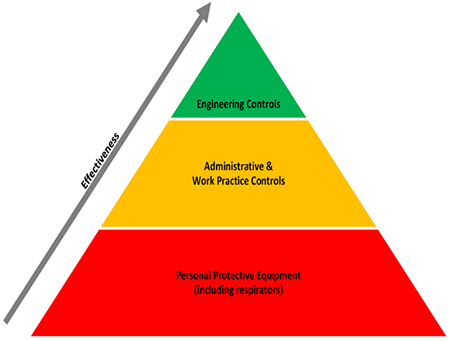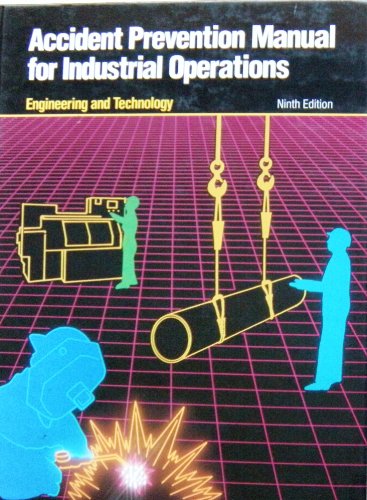By A Mystery Man Writer

Ropes, Chains, and Slings The ability to handle materials—to move them from one location to another, whether during transit or at the worksite—is vital to all segments of industry. Materials must be moved, for example, in order for industry to manufacture, sell, and utilize products. In short, without materials-handling capability, industry would cease to exist. Ropes, chains, and slings require special safety precautions for use and storage. Know the properties of the various types of ropes, chains, and slings used.
S.D. Allen Iske, Associate Professor University of Central Missouri.
CHAPTER 17 ROPES, CHAINS, AND SLINGS
Materials must be moved, for example, in order for industry to manufacture, sell, and utilize products. In short, without materials-handling capability, industry would cease to exist. Ropes, chains, and slings require special safety precautions for use and storage. Know the properties of the various types of ropes, chains, and slings used..
Types of Fiber Rope Manila fiber—best suited natural fiber for cordage Sisal fiber—20% less breaking strength than Manila Acids and caustics deteriorate both manila and sisal fibers Other natural fiber—cotton, flax, straw, asbestos, silk, rawhide, and many others Synthetic fiber—nylon, polyester, and polyolefin used more often than natural fibers more known about their properties splices can be made readily and develop nearly full strength of rope
Types of Fiber Rope Nylon rope has 2.5x the breaking strength of manila and four times its working elasticity highly resistant to organisms that cause mold and mildew breaking strength is reduced by 10–15% when wet or frozen vulnerable to drying oils, mineral acids, phenols, and heat absorbs and stores energy in the same manner as a spring
Types of Fiber Rope (Cont.) Polyester best general-purpose rope does not absorb moisture and retains full strength when wet it has half of the absorption capability of nylon shows little deterioration from sunlight and resists abrasive wear well safe operating temperature range is –20° to 180°F
Types of Fiber Rope (Cont.) Polyolefin similar to nylon and polyester highly resistant to a variety of acids it swells and softens when exposed to hydrocarbons, especially at temperatures above 150°F easily deteriorates under abrasion
Types of Fiber Rope (Cont.) Composite rope made by combining several types of synthetic or combining synthetic and natural fibers can be made to match specific job requirements Other types of rope paper, glass, acrylic, rayon, pvc, rubber, cellulose acetate, fluorocarbon, and polyurethane
Exercise caution when using load ratings as the safety factor is not the same for all ropes. Rope use, condition, and exposure can affect the degree of risk to life and property. See Tables 17–A and 17–B for specifications..
Working load figures generally do not apply when rope is subject to dynamic loading. Working load figures may apply for light dynamic loading, meaning the load is be handled slowly and smoothly to minimize dynamic effects. In towing lines, lifelines, safety lines, and climbing line applications, working loads in Tables 17–A and 17–B do not apply..
Any irregularity in appearance is evidence of the possibility of degradation or weakness. Under ordinary conditions rope must be inspected every 30 days. OSHA requires rope that is used to connect a load to a material handling device to be inspected each day before use..
The fingernail test is a quick test for chemical damage. Internal Untwist the rope in several places to see whether the inner yarns are bright, clear, and unspotted. In rope with a central core, the core should not break away in small pieces when examined..
Do not drag rope. Handle twisted rope so it retains the amount of twist (balance) that the rope seeks when free and relaxed. Kinking strains the rope and may overstress the fibers. Avoid sharp bends over unyielding surfaces. Splice lengths of rope that must be joined, do not knot them. A proper splice will retain 100% strength, while a knot retains only 50%..
Do not allow wet rope to freeze; if rope does freeze, completely thaw before use. Frozen fibers will break as they resist bending. Do not use wet rope or rope reinforced with metallic strands near power lines or other electrical equipment..
Store in a dry place with circulating air, but air should not be extremely dry. Hang up small ropes and lay larger ropes on gratings so air can get underneath and around them. Do not store rope unless it has been cleaned..
Wire Rope more widely used than fiber rope greater strength and durability under severe working conditions physical characteristics do not change when used in varying environments controlled and predictable stretch characteristics
The more wires per strand, flexibility increases. The fewer wires per strand, crush and abrasion resistance increases..
Consideration of the properties of different rope types, core components, and strand count must be evaluated prior to selecting wire rope. Consult engineers from reliable rope manufacturers for assistance in rope selection..
Federal, state, or locals codes may describe exactly how design and operating factors should be figured. Check what codes are in force before final selection..
However, more frequent inspection is highly recommended. Rope should be inspected for crown wires, kinking, high strands, loose wires, nicking, and lubrication. Measure rope diameter and length for sudden changes that may indicate the rope is nearing the end of its useful life..
OSHA specifications for unacceptable rope running ropes 3 broken wires in 1 rope lay and 6 random broken wires in 1 rope lay wire rope slings 5 broken wires in 1 strand in one rope lay and 10 random broken wires in 1 rope lay.
Clean rope monthly with light lubricants and avoid cleaning fluids, which can damage the core..
Condition and contour of sheaves grooves is important for the service life of wire rope. Check sheave tolerances to ensure they are the correct size for the rope to be used. Avoid multi-layer winding of rope on drums when possible. If unavoidable limit the number of layers to three..
The appropriate rope is attached to the drum. 2. Appropriate tension on the rope is maintained as it is wound. 3. Each turn is guided as close to the preceding turn as possible so that there are no gaps between turns. 4. There are at least two dead turns on the drum when the rope is fully unwound during normal operating cycles..
Wire Rope Installation (Cont.)
Pressed fittings, mechanical sleeve splices, hand-tucked splices, clips and clamps, sockets, or knots are acceptable means of rope fittings. Maximum strength of an attachment is attained only when the connection is made according to the manufacturer’s instructions..
It is estimated that 15–35% of crane accidents may involve improper rigging. Loads vary in weight, physical dimension, and shape, therefore a rigger needs to know what method of attachment can be used properly. The single most important rigging precaution is to determine the weight of the load before lifting it..
Fiber and Wire Rope Slings Safety considerations for rope sling assembly: proper rope selection fittings suitable for the load selecting the proper fastening method proper selection of sling type proper hitch selection regular inspection and maintenance
Fiber rope is suitable for handling loads that would otherwise be damaged by contact from metal slings. Wire rope slings provide the greatest strength for slings. Cable-laid slings, made from multiple wire ropes laid into one rope structure, provide more flexibility than strand-laid slings. Braided slings are used where flexibility, high strength, and resistance to corrosion are essential..
Working load Reference rated load capacities given from manufacturer. Abrasion, nicking, distortion, corrosion, and bending will affect the load rating..
Thimbles spliced in the ends of slings will reduce wear. Consider the angle formed, as this greatly affects the working load of a sling..
Rope stress increases rapidly with the angle of lift. Make adjustments in maximum load ratings based on the angle of the hoisting rope. The rated load capacity of the sling decreases sharply as the angle formed by the sling’s leg and the horizontal becomes smaller. When this angle is 45 degrees, the rated load capacity has decreased to 71% of the load that can be lifted when the legs are vertical. The actual stress is equal to the amount of the load that a leg must support, divided by the cosine of the angle that the leg is from the vertical. To avoid excessive angles, use longer slings, if head room permits..
Angle Strength Loss from Rated Capacity
Employees should promptly report any questionable conditions. Immediately withdraw from service slings that fail inspection requirements. Ensure removed slings are unusable by further destroying them before they are discarded..
Safe Operating Practices for Slings (ANSI/ASME) B30.9 recommendations for sling use: load control load positioning inspections communication
Special purpose alloys are available. ASTM-approved alloy steel chains have minimum tensile strength of 115,000 psi and a minimum elongation of 15%. Alloy steel chains are suitable for high-temperature operations. Always use a chain rated for a higher working load if severe impact loading may be encountered..
In emergency conditions that require replacement, select an attachment with extreme care. OSHA prohibits the use of makeshift links, fasteners, or other attachments. Handles attached to assembly hooks to prevent hand and finger injuries and can increase operating efficiency..
initial inspection for new and repaired slings 2. frequent inspections by the person handling it each time it is used 3. periodic inspections on a semiannual or more frequent inspection by a competent person based on frequency of use, severity of service conditions, and service life.
The competent person should have authority to remove damaged assemblies from service. Link-by-link inspection is the best way to detect wear and stretching. Overall measurements of sling length, and even measurements of 1 to 3 ft are inadequate. Measure between the shank and narrowest point of the hook..
Never splice a chain or put strain on a kinked chain. Remember decreasing the angle between the legs of a chain sling and the horizontal increases the load of the legs. See that the load is always properly set in the bowl on the hook. Store chains not in use in a suitable rack..
Each has advantages and disadvantages. Synthetic web slings can be cut easily and are not abrasion resistant. ASTM B783 states the minimum breaking strength shall be 5x the rated capacity. Sling capacity is reduced when used in a basket hitch when used with one crane hook..
Periodic OSHA requires synthetic web slings to be inspected each day before and during use.
Synthetic Web Sling Inspection (Cont.) Types of damage to look for: excessive abrasive wear on webbing and any fittings cuts, tears, snags, punctures, holes, crushed fabric worn or broken stiches burns, charring, melting, or weld spatter damage knots chemical damage broken, distorted, or excessively worn fittings
Safely handle sharp-edged materials, concrete, and high temperature materials up to 500°F. The design factor of metal mesh slings is 5 to 1..
Metal Mesh Slings Structure
Any danger in their use stems mainly from improper use. Follow manufacturer’s recommendations for certain hitches..
Initial, periodic, and frequent inspections are recommended. Maintain written inspection records. Look for signs of wear, lack of flexibility, visible distortion, and other indicators of damage..

ACCIDENT PREVENTION MANUAL FOR BUSINESS & INDUSTRY

OSHA Safety Training - Online Videos - Safetyhub
Accident Prevention Manual for Business & Industry: Engineering

ANSIASSE A1033 1998 R2004 Safety and Health Program Requirements

Hand Safety and Injury Prevention - HSI

Accident Prevention Manual for Business & Industry: Engineering

Accident Prevention Manual for Business & Industry 10th edition

Ergonomics - Solutions to Control Hazards

9780879121365 - Acc Prev Man Indust Oper 9e Vol 2 - Natl Safety Cn